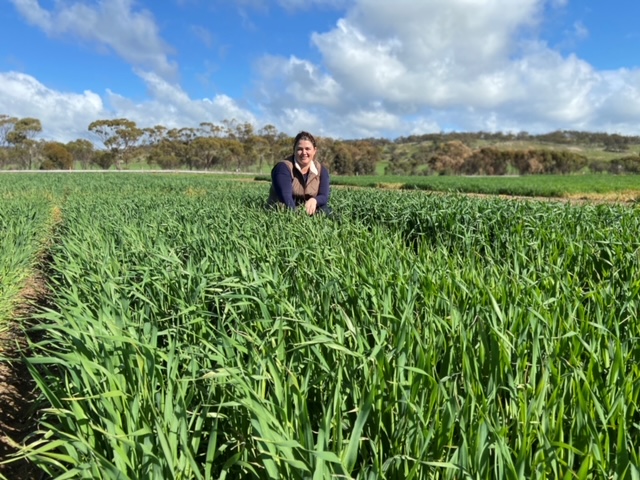Department of Primary Industries and Regional Development researcher Georgie Troup said nitrogen decisions made now would influence oaten hay quality. There was a consistent relationship between increasing nitrogen and decreasing quality.
In 2019 and 2020 the National Hay Agronomy Project, funded by AgriFutures Export Fodder Program, demonstrated the ideal application of nitrogen fertiliser to strike a balance between quality and quantity was between 60-90kg N/ha in the 8t/ha production zone.
Ms Troup said research at Muresk showed a yield increase for an early May sown crop with applications up to 150kg N/ha, but very high rates were detrimental to quality, with the hay downgraded due to reduced water-soluble carbohydrates (WSC).
“Striking a balance between yield and quality is vital if targeting the top hay grade,” she said.
“As soon as you apply nitrogen, there’s a gradual decline in WSC, so it is about finding the point where you optimise hay yield without having a downgrade effect, which affects profitability.
“In 2020, the Western Australian trial had 25 per cent WSC (suitable for the top grade) and yielded 8 tonnes/ha when 90kg N/ha was applied, with two-thirds of the nitrogen applied at seeding and one-third six weeks after.
“In contrast, the South Australian trial demonstrated no benefit when applying more than 30kg N/ha because of the dry winter, which limited nitrogen uptake.”
Ms Troup said seasonal conditions and nitrogen levels in the soils were key factors when deciding how much fertiliser nitrogen to apply.
“2021 is much wetter than the past two seasons. If seasonal conditions continue to track along nicely in WA, then the optimal nitrogen rate may well be in the range of 90-120kg N/ha for a >10t/ha crop,” she said











